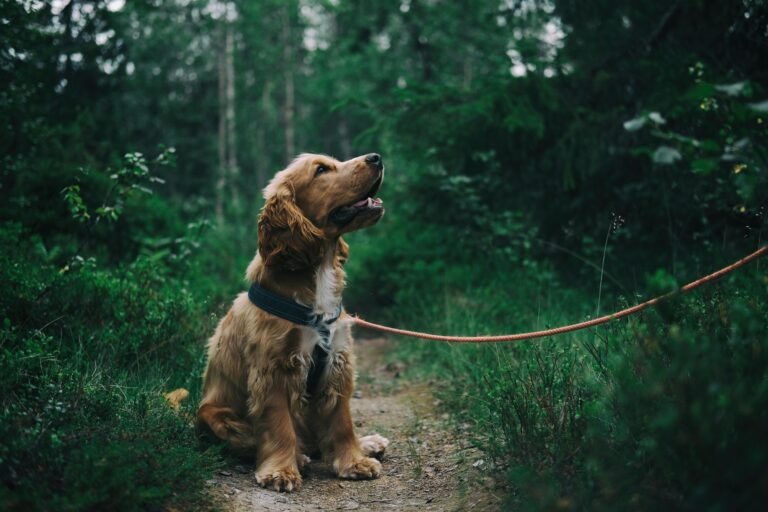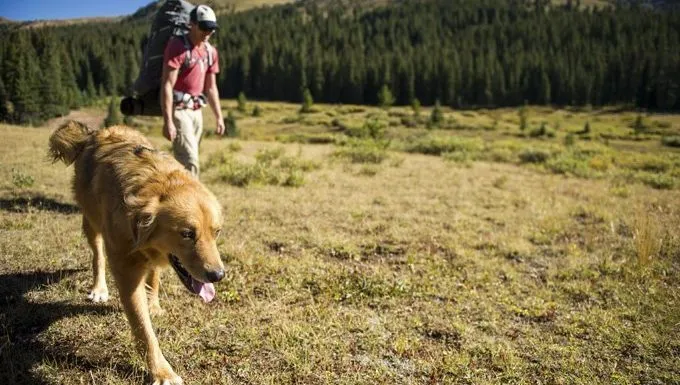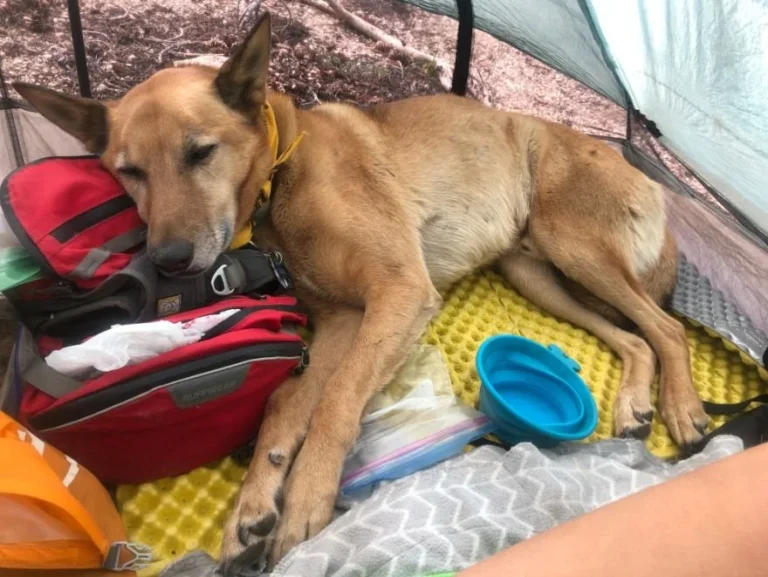Over the summer months, hiking can be a fantastic way to bond with your pup and explore the great outdoors together. However, as temperatures rise, you must consider your furry friend’s safety and comfort during these excursions. In this guide, you will learn important tips and strategies to ensure your dog stays protected from heat, hydration issues, and potential hazards along the trail. By taking the right precautions, you and your pup can enjoy a safe and memorable hiking experience this summer.
Essential Gear for Your Pup’s Safety
Equipping your dog with the right gear enhances their safety and comfort during summer hiking adventures. Look for items that prioritize visibility, stability, and hydration to ensure you can enjoy the trails worry-free. From durable harnesses to hydration packs, selecting the right accessories can make a significant difference in your outdoor experience.
Selecting the Right Dog Backpack and Harness
Choose a backpack that fits your dog well, allowing them to carry a few importants like water and snacks without straining their shoulders or back. Look for adjustable straps and breathable materials for comfort. A well-fitted harness, meanwhile, distributes weight evenly and provides greater control, making it perfect for varied terrain. The combination of these two items can elevate your pup’s adventure while keeping them engaged in the trek.
Must-Have Adventure Gear: Collars, Leashes, and ID Tags
Leashes and collars serve as your dog’s lifeline during outdoor escapades, ensuring they stay safe and secure. Opt for a sturdy, adjustable collar that allows for quick identification, and a durable leash that can withstand the pull of an excited pup. Including an ID tag with your contact information is a must, just in case your furry friend decides to explore off the beaten path.
A sturdy collar and leash not only provide important control but also contribute to your dog’s safety. Make sure the collar is reflective or brightly colored to enhance visibility in low-light conditions, such as dawn or dusk. Invest in a leash that can handle various terrains, preferably one with a padded grip for ease during long hikes. Don’t overlook the importance of an ID tag which should contain your contact details as well as any critical medical information. This simple addition acts as a safeguard against any accidental separations, allowing for quick reunions after a thrilling exploration in the wilderness.
Understanding the Risks of Summer Hiking
Summer hikes can pose various risks to your pup, from extreme heat to hazardous terrain. Exposure to high temperatures can lead to serious health issues for dogs, while hiking trails may also present unforeseen dangers like slippery surfaces or sharp objects. Being aware of these risks allows you to take the necessary precautions and ensure a safe and enjoyable adventure for both you and your furry companion.
Heat Stress: Recognizing the Signs
Heat stress in dogs can escalate quickly, and recognizing the signs is vital for their safety. Symptoms include excessive panting, drooling, lethargy, rapid heartbeat, and in severe cases, disorientation or collapse. If your pup exhibits any of these signs, it’s vital to take immediate action, such as moving them to a shaded area and providing water to help cool them down.
Hazardous Trails: Common Dangers and How to Avoid Them
Common dangers on hiking trails include slippery rocks, steep inclines, thorny plants, and wildlife encounters. To keep your pup safe, choose trails that match both your and your dog’s skill levels, and always assess the terrain before starting. Staying on marked paths reduces the likelihood of encountering hazardous conditions, while keeping your pup on a leash ensures you’re in control during unexpected encounters.
One practical tip for avoiding hazards is to familiarize yourself with the trail before arrival, taking notes on any potential risks. Use online resources like trail reviews and maps to identify difficult sections. Additionally, investing in dog boots can protect their paws from hot surfaces, sharp objects, and uneven terrain, ensuring greater comfort and safety as you navigate rocky paths. Bringing a first-aid kit can also save the day in case of minor injuries due to scrapes or punctures on your adventures.
Keeping Your Furry Friend Hydrated
Hydration is vital for your pup’s well-being during summer hikes. Dehydration can quickly set in, especially with the increased temperatures and physical exertion. Always ensure that you have ample water available for your furry companion and monitor their drinking habits regularly throughout your adventure.
Choosing Water Sources: Safety and Accessibility
Identifying safe water sources during your hike is important. Natural bodies of water, such as streams or lakes, may seem inviting, but they can often harbor harmful bacteria or parasites. Always check for signs of contamination and assess the water flow. When utilitarian, opt for running water as it’s generally cleaner compared to stagnant sources.
Portable Water Solutions: Bowls and Bottles
Bringing along portable water solutions makes it easier to keep your pup hydrated on the go. Collapsible bowls are lightweight and easily stowed in your backpack, while specially designed water bottles for dogs often feature a built-in dish, allowing for quick and convenient access to water whenever your pup needs a drink.
Investing in a high-quality portable water bottle specifically designed for dogs can simplify hydration during hikes. Many models come with an attached trough or dish that lets your pup drink directly without spilling, making it mess-free. Look for bottles with a capacity of at least 20 ounces to ensure your furry friend stays well-hydrated, especially on longer treks. Additionally, consider lightweight collapsible bowls, which can be a great backup if you encounter unexpected trail conditions or need to incentivize your pup to drink more often.
Nutrition Strategies for Active Dogs
Providing adequate nutrition for your active pup during summer adventures ensures they have the stamina and energy to enjoy the outdoors. A well-balanced diet designed for high-energy activities can optimize their performance on the trails. Choose high-quality dog food that includes protein, healthy fats, and carbohydrates which support sustained energy levels. Additionally, consider carrying some extra supplies to keep your dog fueled throughout the hike, which will help maintain their performance and mood while exploring the great outdoors.
Energy-Boosting Snacks for the Trail
Trail snacks play an imperative role in keeping your dog energized during hikes. Opt for snacks that are high in protein and carbohydrates, such as jerky, nut butter-filled treats, or freeze-dried fruits. Additionally, specially formulated dog treats designed for endurance can provide a quick energy boost while being easy to carry. Choose snacks that your pup loves and can digest easily to ensure they stay motivated to hike through the trails without slowing down.
Hydration and Food: Timing is Everything
Proper timing of food and water intake can significantly affect your pup’s performance on hikes. Feeding your dog a light meal a couple of hours before heading out can enhance their energy levels without causing discomfort on the trail. Always offer water breaks every few miles, as dogs can easily become dehydrated. A rule of thumb for hydration is to provide water at least every hour or whenever your dog shows signs of thirst. Keeping track of their eating and drinking schedule will ensure they’re fueled up for every step of your adventure.
Timing snacks and hydration properly can prevent fatigue and overheating. If you give your dog large meals directly before heading out, they may experience sluggishness or gastrointestinal distress. Instead, consider lighter, more frequent snacks throughout your hike. Monitor your dog’s behavior—if they seem tired, offering a snack and a break can rejuvenate them. Also, assess their hydration levels by gauging how often they drink, adjusting the amount based on the weather and their exertion level. Balancing food and water at the right times will pave the way for a more enjoyable adventure for you and your furry friend.
Navigating Wildlife Encounters
As you venture into the wild, keeping your dog safe from wildlife encounters enhances your adventure. Be aware of the animals that inhabit the area, and always stay alert to your surroundings. Familiarize yourself with the specific wildlife common to your hiking trail and understand how to react if an encounter occurs. Proper preparation minimizes risks, ensuring both you and your pup can enjoy the tranquility of nature without unnecessary stress.
Common Trail Dangers: Wild Animals and Pests
Wild animals such as bears, snakes, and coyotes can pose threats while hiking. Additionally, pests like ticks and fleas are prevalent in many areas, potentially leading to serious health issues for your pup. Keep an eye on trail signs for wildlife warnings and thoroughly check your dog for any pests upon returning home. Leaving your dog on a leash and avoiding areas known for significant wildlife activity will also help mitigate risks.
Training Your Dog to React: Commands and Control
Training your dog to respond effectively to wildlife encounters starts with crucial commands. Commands like “leave it,” “come,” and “stay” can prevent your dog from approaching potentially dangerous animals. Practicing these commands in a controlled environment and gradually introducing distractions will enhance your pup’s ability to respond promptly in the wild. Reinforce these behaviors with positive reinforcement, ensuring your dog focuses on you during high-stress situations.
Utilizing a clicker or treats can make the training process enjoyable and effective. Consistent training sessions in various environments can help your pup understand the importance of commands even in the wild. Gradually introduce realistic scenarios, such as encountering squirrels or deer on a walk, to simulate the hiking experience. By fostering a solid bond and clear communication with your dog, you can significantly enhance safety and control during unexpected wildlife encounters.
Summing up
Drawing together the necessarys for protecting your pup during a summer adventure while hiking, make sure you keep them hydrated, well-rested, and sheltered from the heat. Invest in a dog-friendly sunscreen and consider protective gear like booties for rough terrain. Keep an eye on the signs of overheating and know when to take breaks in the shade. By prioritizing your dog’s comfort and safety, you’ll ensure that both of you enjoy your hike to the fullest, creating memorable experiences together in the great outdoors.






